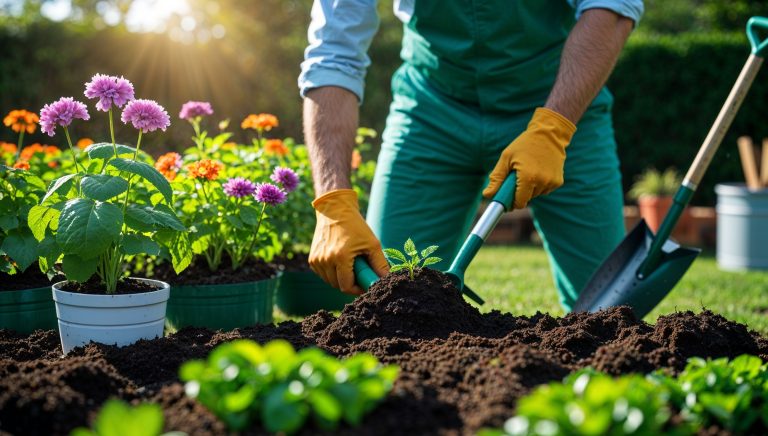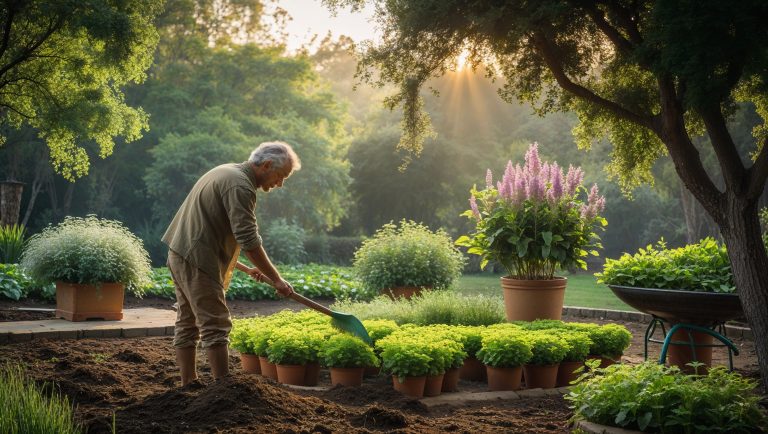

Preparing your garden for planting is one of the most crucial steps to ensure a healthy and thriving garden. Whether you are planting flowers, vegetables, or herbs, proper preparation helps to create the ideal environment for plants to grow. In this step-by-step guide, we will walk you through the essential tasks needed to prepare your garden for planting, from soil preparation to the tools you’ll need.
Before you start planting, take a moment to assess your garden space. This will help you determine how to best utilize the area and what plants are most suitable for the conditions.
Different plants require different amounts of sunlight. Some need full sun to thrive, while others prefer partial or full shade. Spend a few days observing the sunlight in your garden and note which areas get the most sun throughout the day. This will guide your planting choices, ensuring that sun-loving plants, like tomatoes and marigolds, get plenty of exposure, while shade-loving plants, like ferns and hostas, are placed in the right spots.
Understanding your garden’s soil type is essential for choosing the right plants. Soil can vary in texture and nutrient content, and plants thrive best in specific soil conditions. If your soil is heavy clay or sandy, you may need to amend it with organic material, such as compost, to improve its structure. Loamy soil is ideal for most plants because it retains moisture without becoming soggy, allowing the roots to breathe.
One of the first steps in preparing your garden for planting is cleaning and clearing the space. This will create a fresh foundation for your plants to grow.
Weeds can compete with your plants for water, nutrients, and space, so it’s essential to remove them from your garden before planting. Use a hoe or hand tools to dig out weeds, making sure to get the roots to prevent them from regrowing. Additionally, clear away any rocks, dead plant matter, or debris from the area to ensure that your soil is exposed and ready for planting.
If you have existing plants that have become overgrown or untidy, trim them back to improve airflow and prevent disease. Pruning older plants will also allow new growth to emerge and make room for new plants to thrive.
Soil preparation is one of the most important tasks when preparing your garden for planting. Healthy soil is essential for strong plant growth and will provide the nutrients your plants need to flourish.
Before adding any amendments, it’s a good idea to test your soil to determine its pH and nutrient levels. You can purchase a soil testing kit from a garden center or send a soil sample to a laboratory for analysis. The ideal soil pH for most plants is between 6.0 and 7.0. If your soil is too acidic or alkaline, you can amend it by adding lime to raise the pH or sulfur to lower it.
Adding organic matter like compost, well-rotted manure, or leaf mold is one of the best ways to improve soil quality. Organic matter helps to improve soil structure, increase nutrient availability, and improve moisture retention. Mix compost or organic matter thoroughly into the top few inches of soil, and be sure to spread it evenly across your garden beds.
Once your garden space is prepared, it’s time to plan the layout of your garden. This is an essential step that will help you make the most of your available space and ensure your plants have enough room to grow.
When planning your garden, it’s important to consider how much space each plant needs to grow. For example, large plants like tomatoes or cabbage need more space than smaller herbs or flowers. Be sure to follow the recommended spacing guidelines for each plant to prevent overcrowding, which can lead to poor air circulation and increased risk of disease.
Draw a rough layout of your garden, noting where each plant will go. Take into account factors like sunlight, water availability, and growth habits. Group plants that have similar care requirements together to make maintenance easier. For instance, place sun-loving plants in the areas with the most sunlight and water-hungry plants closer to a water source.
Having the right tools on hand is essential when preparing your garden for planting. The right tools will make the job easier and more efficient.
Having these essential tools will help you perform the tasks needed to prepare your garden with ease.
After preparing your garden space and gathering your tools, it’s time to plant! Follow these steps for a successful planting process.
When planting, ensure that each plant has a hole deep and wide enough to accommodate its root system. For most plants, the hole should be roughly the same depth as the root ball. Gently loosen the roots of each plant before placing it into the hole and cover it with soil. Be sure to firm the soil around the plant to remove air pockets and ensure good root-to-soil contact.
After planting, water the plants thoroughly to help settle the soil around the roots. This will also help them acclimate to their new environment. Be sure to water deeply, allowing the moisture to reach the roots, but avoid overwatering, as this can lead to root rot.
Once your garden is planted, it’s essential to continue caring for it. Regular maintenance will help your plants grow strong and healthy.
Keep an eye on the weather and adjust your watering schedule accordingly. During hot, dry spells, your plants may need extra water. Water deeply but less frequently to encourage deep root growth. Make sure to water in the morning to reduce evaporation and prevent fungal diseases.
Adding mulch around your plants is a great way to retain moisture, suppress weeds, and keep the soil temperature stable. Organic mulches, such as straw or wood chips, also break down over time, enriching the soil.